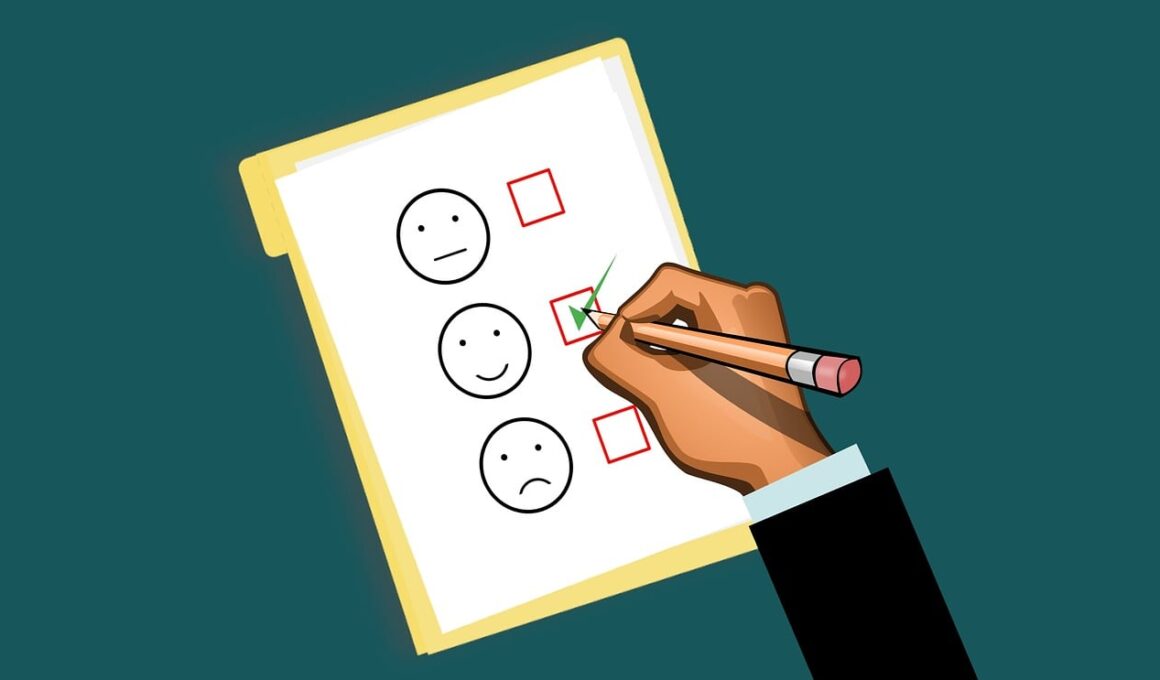The Psychology Behind User Polls and Social Engagement
User polls are a fascinating exploration into the intersections of psychology and social engagement. They offer an effective way of tapping into the collective preferences of a target audience. By designing user polls, brands can connect with their audience, providing a platform for expression. This engagement helps brands gain valuable insights into consumer attitudes and preferences. Moreover, polls can make audience members feel heard, contributing to a sense of community. The more participants engage, the more likely they will share the results, creating a ripple effect. The psychological satisfaction of contributing to a group opinion can foster loyalty toward a brand. Moreover, polls encourage participation, which boosts active engagement on various platforms. Understanding the psychology behind user polls can enable marketers to devise strategies that resonate with audiences. Additionally, knowing how to formulate questions can lead to higher participation rates. Factors such as question clarity, relevance, and presentation style all contribute significantly to the effectiveness of user polls.
User polls can serve various purposes, ranging from market research to community engagement, allowing users to express preferences. According to research, polls capitalize on social validation—a psychological concept describing how individual opinions are influenced by the perceived views of a group. When users see others voting on specific issues, their interest peaks. Therefore, the creation and distribution of user polls become instrumental in shaping opinions as well. Moreover, a well-crafted poll has the potential to stimulate discussions, fostering further engagement. This phenomenon can create a sense of urgency, encouraging individuals to participate promptly. Moreover, polls allow brands to gather feedback on products and services, fine-tuning offerings based on user insights. Platforms hosting user-generated polls often see higher user retention, as the content is both relevant and interactive. An exciting fact is that visual elements in polls can further engage users, making the experience enjoyable. Survey results can be presented interactively, offering immediate gratification and satisfaction for users who contribute. Thus, the allure of user polls lies in their ability to transform passive observers into active participants.
The Emotional Connection Behind Poll Participation
Emotions heavily influence individuals when participating in user polls. Polls tap into users’ desires to belong and make their voices count. This sense of importance is a significant motivator for engagement, driving people to contribute their opinions. The emotional connection can be particularly pronounced in social polls that tackle compelling subjects, prompting discussions on current events or personal experiences. Additionally, users often appreciate being part of a larger conversation, especially when polls revolve around topics that resonate with their interests. Engaging in a user poll can evoke feelings of validation if participants find that many people share their views. Consequently, emotional satisfaction plays a critical role in the decision to participate in polls. Social media platforms excel in this regard, offering environments where users can quickly express themselves. Moreover, polls can initiate emotional responses regarding shared values. Contrastingly, when participants feel alienated from the majority opinion, they may hesitate to voice their thoughts. Thus, creating a safe space for all opinions can enhance user participation and loyalty towards brands that prioritize inclusivity.
Furthermore, the way questions are phrased can greatly affect user engagement in polls. Open-ended questions often invite richer responses, while closed-ended questions may streamline results for easier analysis. Understanding the audience is central to creating effective polls and eliciting emotional responses. Leveraging insights from user data can guide brands in crafting questions that resonate. For instance, using relatable language can encourage more authentic participation. Visual elements can significantly enhance the appeal of user polls as well. Effective design enhances clarity and reduces cognitive overload, making it easier for users to engage. Simplicity can be paramount; complex or cumbersome formats may deter users. Thus, utilizing a straightforward design approach can lead to higher engagement rates. Polls that include compelling visuals capture attention, resulting in more responses. Furthermore, brands often share results, igniting curiosity and encouraging discussion among participants. Developing an engaging feedback loop is essential, as presenting poll outcomes can further bolster user connection and feeling of involvement. Hence, user-generated polls are invaluable in nurturing a thriving community while generating relevant brand insights.
Feedback Loops in User Polls
Feedback loops are crucial in maximizing the effectiveness of user polls while fostering engagement. Once users have participated, they often become interested in the results and analysis. Sharing these results not only satisfies participant curiosity but reinforces the feeling that their opinions matter. This sense of validation can encourage ongoing participation, creating a cycle of engagement. Brands can utilize real-time results to keep users informed and actively involved. When users see how their input influences outcomes, it becomes a powerful motivator for future participation. Moreover, transparency in sharing poll results can build trust between users and brands. Disclosing the methods of polling can further enhance credibility, inviting more users to join. Additionally, brands should utilize collective feedback to inform decision-making, demonstrating responsiveness to user insights. This responsiveness fosters loyalty, further increasing user engagement over time. By closing the feedback loop, brands effectively treat participants as valuable contributors. Thus, understanding the mechanics of feedback loops bolsters engagement strategies and ensures that user interests remain a primary focus in brand campaigns.
Besides enhancing engagement and offering valuable data, user polls benefit innumerable aspects of consumer behavior. Another significant aspect is that they encourage sharing among participants. Users often prefer to express opinions in social contexts, boasting about their contributions. This intrinsic motivation to share often leads to organic reach and promotes community building. As users share their poll participation on social media, they inevitably invite their friends to join, increasing the potential user base. Brands can amplify this effect by integrating social sharing options into polls, enabling users to post their responses directly. Furthermore, timely polls can capitalize on trending topics, enticing more users to indulge. Engaging users during hot conversations ensures that polls remain relevant and appealing. Likewise, creating a sense of urgency around poll participation can heighten interest. Polls presenting time-limited questions can spark quicker responses, as users fear missing out. This sense of urgency enhances the psychological appeal of participation, prompting active engagement. Overall, devising user polls as a strategy underscores their dual role in gathering insights while building community connections.
The Future of User Polls in Digital Marketing
As digital marketing evolves, the role of user polls will likely become more instrumental than ever. Emerging technologies, including AI and data analytics, can enhance the effectiveness of polls, tailoring questions to specific audience segments. This adaptation will ensure that polls resonate and respond directly to user interests. Furthermore, the integration of chatbots in social media can offer real-time polling features, inviting instant responses. This technological evolution would streamline the polling process and generate higher participation rates. Additionally, polling will increasingly focus on personalizing the user experience, responding to individual preferences and inclinations. Personalized polls can provide deeper insights into user behavior, enriching marketers’ understanding of their audience. Enhanced interactivity through gamification in polls may further captivate respondents, encouraging increased engagement. Because user-generated content evolves, so too will the strategies that organizations employ to utilize it effectively. Considering the importance of user feedback, adapting polls accordingly allows brands to stay relevant in a rapidly shifting digital landscape. Therefore, embracing the future of user polls will be invaluable for brands aiming for sustained engagement and growth.
In conclusion, user polls represent a bridge between brands and audiences, enriching the potential for social engagement. They allow for the meaningful exchange of ideas, while also offering valuable insights for brands. The psychological dynamics at play underscore the importance of creating engaging user polls. Understanding emotional motivations, and crafting well-defined questions, can significantly affect participant engagement. As brand strategies evolve, so too will the methods of leveraging user-generated content. Polls can contribute a wealth of insights while fostering community, creating loyalty and widening brands’ reach. Thus, the effectiveness of user-generated polls lies not just in the data gathered, but in the connection made with the audience. These polls create valuable opportunities for brands to maintain discussions, listen to their audience, and adapt accordingly. The importance of user polls will only increase as social media and digital interactions continue to evolve. Further exploration in this area will likely unveil new opportunities for brands to engage their audiences even more meaningfully. Therefore, brands should prioritize user polls as effective tools for growth, learning, and fostering deeper user connections.


